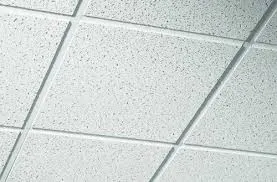Nov . 25, 2024 17:52 Back to list
Exploring T-Bar Ceiling Track Systems for Effective Interior Design Solutions
Understanding T-Bar Ceiling Track Systems
T-bar ceiling track systems have become an increasingly popular choice in modern construction and interior design for their versatility, ease of installation, and aesthetic appeal. These systems are predominantly used in commercial and residential spaces, offering both functionality and a polished look. In this article, we will explore the various aspects of T-bar ceiling track systems, including their structure, installation process, benefits, and applications.
What is a T-Bar Ceiling Track?
A T-bar ceiling track refers to the grid framework that supports ceiling panels or tiles, often made from metal or PVC. The “T-bar” name derives from the T-shaped cross-section of the grid runners, which are designed to hold the ceiling panels securely in place. This system enables the easy installation of acoustic tiles, drywall, or other types of ceiling materials, allowing for versatility in design and finish.
Structure and Components
A typical T-bar ceiling track system consists of a series of main runners that run parallel to each other, with cross tees connecting them at regular intervals. The main runners are typically larger and support the weight of the ceiling tiles, while the cross tees facilitate the alignment and placement of the panels. The panels fit seamlessly into the grid, providing a clean, finished appearance. Additionally, this structure allows for the inclusion of insulation and soundproofing materials, making it an excellent choice for commercial spaces that require noise reduction.
Installation Process
Installing a T-bar ceiling track system requires careful planning and execution. The first step is to measure the room to determine the layout of the grid. Once the dimensions are established, the main runners are installed in a level plane, anchored to the ceiling. After securing these, the cross tees are inserted to form the grid. Finally, ceiling tiles are placed into the openings of the grid, completing the installation.
t bar ceiling track

This installation process can typically be completed in a matter of hours, depending on the size of the room and the complexity of the design. Additionally, the ease of installation means that T-bar ceilings can often be retrofitted into existing spaces without requiring major renovations.
Benefits of T-Bar Ceiling Systems
One of the primary benefits of T-bar ceiling track systems is their flexibility. They can accommodate a wide range of materials, colors, and patterns, making them suitable for various design aesthetics. Furthermore, T-bar ceilings facilitate easy access to ductwork, plumbing, and electrical systems above the ceiling, permitting maintenance and repairs with minimal disruption.
Another significant advantage is the acoustic benefits they provide. By incorporating acoustic ceiling tiles into the grid, spaces can effectively reduce sound transmission, making T-bar ceilings an excellent choice for offices, schools, and other high-traffic environments.
Applications
T-bar ceiling track systems are commonly found in commercial settings such as offices, retail spaces, schools, hospitals, and convention centers. However, they are also gaining popularity in residential applications, particularly in basements, laundry rooms, and recreational spaces where ease of access and sound control are essential.
In conclusion, T-bar ceiling track systems offer a versatile, aesthetically pleasing, and practical solution for various spaces. Their ease of installation, combined with the ability to customize designs, makes them a favored choice among architects, designers, and homeowners alike. Whether for sound management in an office or simply for designing an attractive interior, T-bar ceilings are worth considering in any renovation or construction project.
-
Durable Ceiling T Grid Systems | Easy InstallationNewsAug.29,2025
-
PVC Gypsum Ceiling: Durable, Laminated Tiles for Modern SpacesNewsAug.28,2025
-
Pvc Gypsum Ceiling Is DurableNewsAug.21,2025
-
Mineral Fiber Board Is DurableNewsAug.21,2025
-
Ceiling Tile Clip Reusable DesignNewsAug.21,2025
-
Ceiling T Grid Modular DesignNewsAug.21,2025







